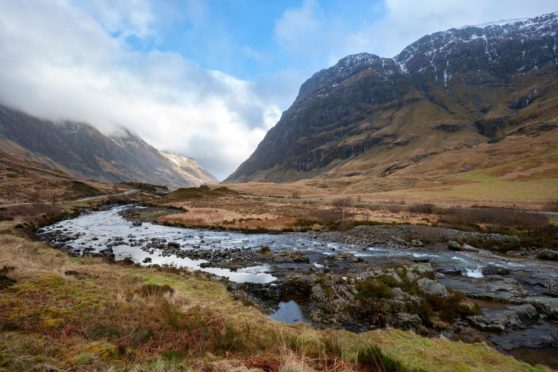To dig into Scotland’s history is to come across reminders that, on this side of the Atlantic, America and its government have often been associated with policies and values very different from those encapsulated in the nastily aggressive tweets from Donald Trump’s White House.
One such reminder consists of a 15-minute, black-and-white film preserved in the National Library of Scotland’s Moving Image Archive.
Viewable by anyone logging into the library’s online site, this film, issued in 1943 and made by the wartime Ministry of Information, is entitled Power for the Highlands.
Much of the film’s action takes place on a train chugging through a scenically splendid but deserted Highland glen.
In one of the train’s compartments a soldier and sailor, both heading home on leave, are discussing with the compartment’s other occupants what, if anything, the post-war Highlands might offer young folk like them.
They’re by no means optimistic. The empty scenes their train is passing through give rise to talk of the Highland Clearances and mention of the fact that, although clearances might have ceased, the pre-war Highlands had seen thousands of people move away because there was nothing for them in the north.
“What we want,” says the soldier, “is the land back again.”
At this an older man, in the tweeds of a stalker or ghillie, intervenes angrily. “You’d think the land belongs to you and not to the laird,” he declares.
“It’s not for us to say what should be done with it.” Sporting estates, he insists, have provided men like him with lifelong jobs.
Another of the train compartment’s occupants speaks up: “What good have your sporting preserves done for the rest of us?”
Twenty years before, this man says, he’d headed south to become an engineer. But now he’s back because parliament’s just passed an Act that will lead to the construction of dams and power stations all across the north.
What the Highlands need, the engineer says, is readily available electricity.
The stalker’s unimpressed. Dams, power stations, electricity for all. These, he reckons, are just fancy dreams.
What changes his mind, once he’s back at work, is a chance encounter with two American GIs.
They’re driving a jeep with military markings and they’re part of the US troop build-up preceding the D-Day landings. They’re also lost and looking for directions from the stalker whose corner of the Highlands, they say, looks just like their part of Tennessee.
But there’s one big difference, the US servicemen go on. Their home district has benefited from the US government’s creation of what they call the TVA – the Tennessee Valley Authority.
The TVA, they explain, has built scores of dams, scores of power stations. As a result, their folk’s fortunes have been transformed greatly for the better.
The stalker’s persuaded. The homecoming engineer, who’s glimpsed at the film’s close surveying the site of a projected dam, might well be right, the stalker concludes.
The Highland future may not be best served by entrusting that future to sporting estates and their owners.
The TVA was a key component of Franklin D Roosevelt’s New Deal – the means by which that Democrat president looked to deploy the massive resources of the US federal government in ways intended to combat unemployment while also bringing betterment to some of America’s most run-down localities.
The North of Scotland Hydro-Electric Board, concept of wartime Scottish Secretary Tom Johnston, was modelled on the TVA.
And as suggested in the 1943 film released to mark the UK Parliament’s adoption of the Hydro Board’s founding legislation, the board would indeed bring mains electricity to every part of northern Scotland.
Now that a new Democrat president, Joe Biden, is preparing to move into the White House there’s talk of a further New Deal in the US.
This one, it seems, will be a Green New Deal that’ll boost all sorts of renewable energy technologies while also boosting employment prospects and living standards.
Today’s Highlands, unlike the Highlands of the 1940s, are a locality where, thanks to Tom Johnston’s Hydro Board, everyone has access to electricity.
But today’s Highlands are also a place where, for young folk in particular, jobs are scarce and homes increasingly unaffordable.
Maybe it’s time for the UK and Scottish Governments to commit to their own versions of Joe Biden’s New Deal.
They could start by signalling a willingness – the sort of willingness flagged up by the Ministry of Information’s 1943 film-makers – to spend massively on a renewed programme of Highland advancement.
Jim Hunter is a historian, award-winning author and Emeritus Professor of History at the University of the Highlands and Islands











